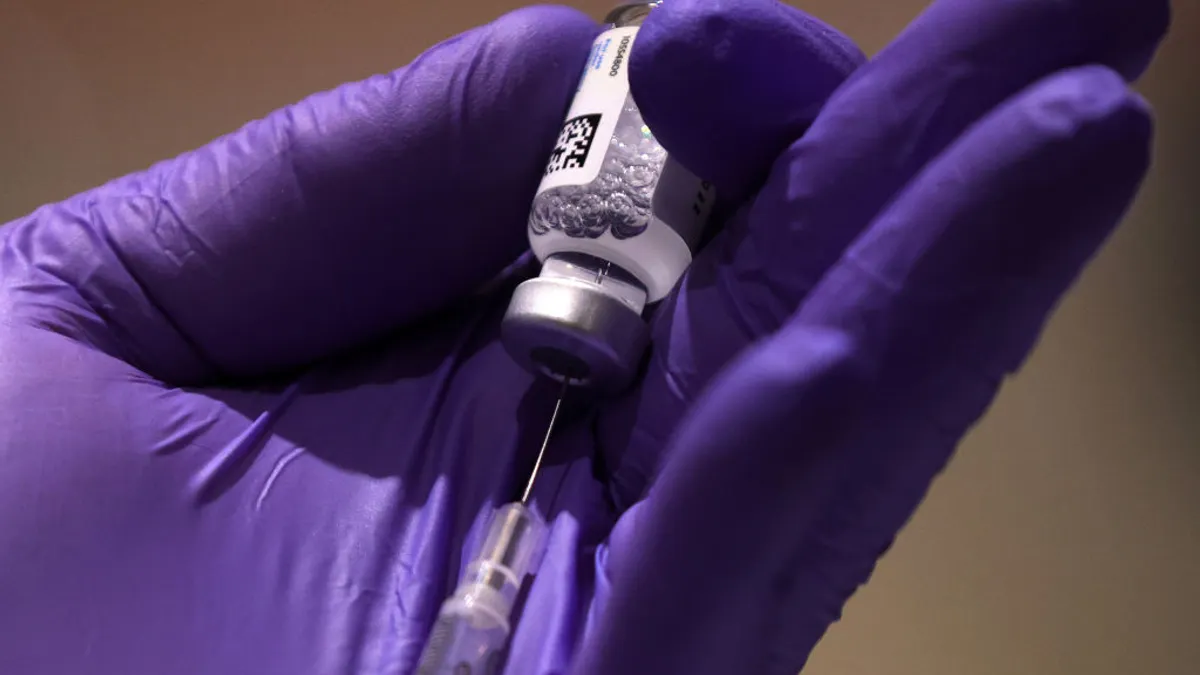If precision medicine is the biopharma industry's destination, then biomarkers are the fuel to get there. After all, gathering information about a patient's disease is the only way to arrive at the correct treatment.
Traditionally, biomarkers might provide genetic clues or knowledge gained from a blood test or biopsy. But with the rising ubiquity of technology in patients' and caregivers' lives, digital biomarkers have grown as a source of data about patients beyond the chemical manifestations of disease.
For AiCure, a company that uses AI to work within the clinical trial space, that journey started with an application for medication adherence — audio and video evidence of patients taking the correct pill would take away some of the least predictable parts of trial management, said Rich Christie, the company's chief medical officer.
And from that seed of cellphone video check-ins came new ways to monitor patients with, for example, depression, which could be assessed through head movement, speech and expression.
"We have a whole toolkit around facial expressivity, how emotions are expressed on the face and how that relates to what's being said," Christie said. "And this particular take on digital biomarkers is that it's on people's cellphones, so there's no additional hardware and it integrates seamlessly into their daily activities — phones are such an intimate technology these days that it allows you to check in on people in a very naturalistic way."
We spoke to Christie about the applications of digital biomarkers and how they can lead to better information about patients, as well as how they could help the biopharma industry understand more about the drugs they discover, develop and market.
This interview has been edited for brevity and clarity.
PHARMAVOICE: Can you talk about some of the specific pharmaceutical uses of digital biomarkers right now?
RICH CHRISTIE: We've been very fortunate to work with collaborators in pharma on a couple of fronts. One is schizophrenia. We've been able to look at particularly negative symptoms of schizophrenia and ask the question, could we use some of these tools to get at things like flatness of affect or alogia or some of the changes in voice that have been documented in scientific literature? And we were able to do this. We also looked at depression. People with depression don't talk very much, don't move very much and their faces don't light up — so these are all things you can measure on a cellphone. And we ran a study where we were able to demonstrate that as people took SSRIs and started to recover, these things started to come back. We were able to document that on a cellphone.
Generally speaking, what is the breadth of digital biomarkers currently?
To cast the net more broadly, any digital technology that measures behavior. There's some remarkable technology using passive assessment — using the accelerometer to watch people move through the world, for example, and using that data to understand how that relates to disease. There are things like EEG (or electroencephalogram measuring electrical activity in the brain) that allow for naturalistic collection of data with just a watch or a Fitbit to see things like hand tremors and Parkinson's disease. These are classic examples of digital biomarkers, and it's just incredible to see the pace at which these are coming online.
We're at an inflection point with this technology. Can you talk a bit about what it looked like 10 years ago and what you think it will look like 10 years from now?
Wow, that's a whole pandemic ago! Ten years ago, you had things like pulse rate measurement and variability, which has become a pretty interesting biomarker. And the measurement of that one specific thing lets a clinician measure that in people's lives and at a much higher frequency. But it was still just one measure. But now you're measuring it better, a little more accurately and in a widespread way.
Where we're heading 10 years from now, by contrast, is what I would call a true multimodal synthesis of digital biomarkers. And this is where you're getting at the patient experience from a number of different directions. For us, it's the combination of audio and video, picking up what a physician would see and hear sitting across from a patient. We'll have models that can grasp the entire diversity of measurement and wrestle it down to digestible inferential tools to understand how people are doing relative to their disease or to their treatment.
There's a differentiation between traditional biomarkers and digital biomarkers. What does a combination look like down the road?
This is a really interesting field because there's so much information on traditional things like blood biomarkers and genetic biomarkers. They give you very specific kinds of information. Digital biomarkers let you scale and collect broad information in a multimodal way. Let's look at cardiovascular medicine. Someone with traditional biomarkers of hypercholesterolemia or atherosclerotic disease shows the core risk factors, but digital biomarkers are much more lightweight and have a high frequency that can drill into individual experience. So where I think digital biomarkers will lead is to building a bridge between these populational views from traditional biomarkers to the individual. I think it goes straight to the heart of precision medicine, really understanding the person in front of the phone and how they're relating to their treatment and their disease.
How do you build trust in digital biomarkers through an accumulation of data?
It's a validation process, and it's all about data. It's an exercise of tying digital results to traditional clinical results. Because digital biomarkers are so easy to deploy in the real world, you can connect them to real-world evidence. Results that relate to the value of medication, the impact the medication is having on quality of life, or on people's ability to perform certain activities of living — those datasets will make people more and more comfortable.
How can pharma companies benefit from the use of digital biomarkers to improve a drug's life cycle?
On one hand, you have truly validated endpoints. You can develop a new way to use a digital tool to measure and validate an endpoint and use that in a regulatory sense. And there's a whole new pathway to nailing that down. You can also use these as full-blown diagnostics. There's a whole regulatory path for that and a whole standard for developing data.
But an intriguing area is also, how do you gain insight during clinical development that will translate into the real world? One of the things we're working on is with the U.S. Department of Defense in post-traumatic stress disorder. We're using our digital biomarkers to try to understand who might respond or not to different medications. Once you understand how it works, it leaves you with a tool that you can then think about using in the real world.





















